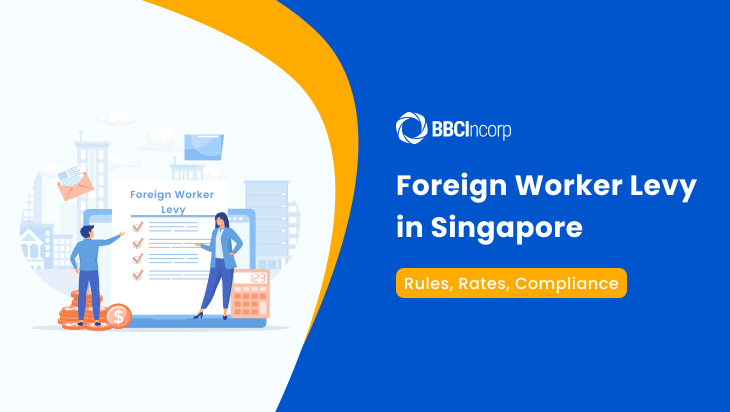
The foreign worker levy in Singapore serves as a key regulatory measure to manage the proportion of foreign manpower and sustain a balanced labour market. Employers of Work Permit holders are required to pay this foreign worker levy (FWL) monthly, with rates determined by sector and workforce composition. The levy framework incentivises prudent manpower planning while supporting local employment.
Managing FWL obligations effectively enables employers to maintain compliance, optimize costs, and ensure business continuity. Let’s look into the rules, rates, and compliance essentials every employer should be aware of.
What is the foreign worker levy in Singapore?
The foreign worker levy in Singapore is a monthly fee that employers must pay when hiring foreign workers holding either a Work Permit or an S Pass.
Often referred to as the FWL Singapore or simply the worker levy, this portion is not deducted from the employee’s salary, but is fully borne by the employer. The levy is part of the government’s workforce policy to moderate dependence on lower-skilled foreign manpower while encouraging businesses to improve productivity and invest in local employees.
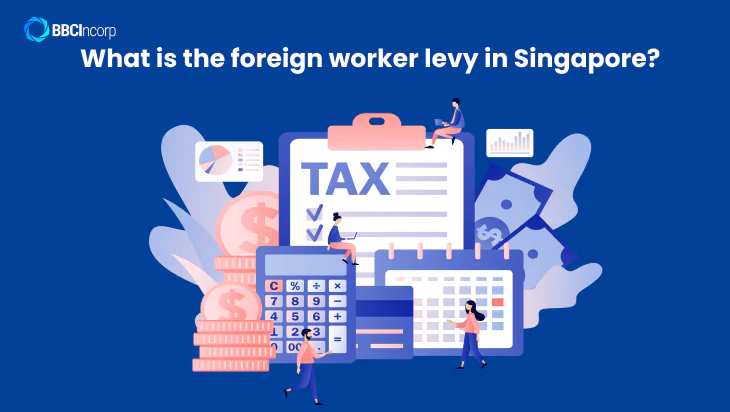
Clear training on the Foreign Worker Levy is critical, as non-compliance can lead to significant penalties and operational risks. These penalties include:
- A late payment penalty.
- Revocation of your existing Work Permits.
- Disqualification from applying for, issuing, or renewing Work Permits.
- Potential legal action to recover unpaid levies.
- If you, your partners, or directors lead other companies, those companies may also be barred from applying for Work Permits.
Why the levy exists
The FWL was introduced to help regulate Singapore’s labour market and sustain economic growth. By imposing a cost on each foreign worker, it incentivises employers to hire responsibly, reduce reliance on lower-skilled manpower, and explore automation or upskilling initiatives.
In addition, the levy complements other policies that support the employment of Singapore Citizens and Permanent Residents.
How the levy differs from quotas
It is common to confuse the levy with the foreign worker quota, also called the Dependency Ratio Ceiling (DRC). The quota caps the percentage of foreign workers a business can hire based on its industry and total workforce size.
Once within the allowable quota, the employer still needs to pay the monthly worker levy for each eligible employee. Both mechanisms work together to limit over-reliance on foreign manpower.
Who pays the levy
Employers are fully responsible for paying the foreign worker levy in Singapore. Payment is due by the 17th of every month (both through GIRO and PayNow QR), or the next working day if it falls on a weekend or public holiday.
Employers must also monitor their quota to ensure continued eligibility to hire foreign workers. Each month’s levy bill can be viewed on MOM’s website on the 3rd working day as well.
Who is subject to the levy
The levy applies to foreign employees hired on Work Permits and S Passes. Rates and quota limits vary by industry, skill level of the worker, and the proportion of foreign to local workers in the company. S Pass holders, who are mid-skilled, attract a different levy structure and are also subject to a sub-quota.
Employment Pass holders are exempt from the levy, as they qualify under higher skill and salary thresholds and are not subject to quotas.
Understanding what is foreign worker levy is and how it applies helps businesses plan their manpower strategy, control costs effectively, and remain fully compliant with Singapore’s employment regulations.
The proper management of FWL obligations promotes sustainable growth and workforce resilience, so below is a summary table to make navigating easier.
| Pass Type | Applies to Levy? | Subject to Quota? | Typical Sectors | Notes |
| Work Permit | Yes | Yes | Construction, Manufacturing, Marine, Process, Services | For lower-skilled workers |
| S Pass | Yes | Yes (sub‑quota) | Same as above | For mid-skilled workers |
| Employment Pass | No | No | All sectors | For higher-skilled professionals |
How is the foreign worker levy calculated?
The levy rates vary depending on several factors, including the company’s foreign workforce composition, the workers’ skill level, and the sector of operation. Using tools like the foreign worker levy calculator provided by the Ministry of Manpower (MOM) can help businesses estimate their FWL payment accurately each month.
Factors affecting levy rates
The levy system is structured to encourage employers to hire within reasonable limits and invest in upskilling.
One key determinant is the Dependency Ratio Ceiling (DRC), the maximum proportion of foreign workers allowed in a company. Employers hiring foreign workers within the lowest quota tier enjoy a basic levy rate, while those exceeding the lower tier and approaching the maximum quota pay a higher levy rate per worker.
Workers’ skill levels also play a role. Those classified as higher skilled, such as those holding relevant certifications or meeting specific training criteria, qualify for lower levy rates compared to unskilled workers.
Finally, levy rates are sector-specific. Industries like construction, manufacturing, marine shipyard, process, and services each have their own quota limits and corresponding levy structures to reflect their reliance on foreign manpower.
Monthly levy payment structure
The worker levy payment is charged monthly for each Work Permit or S Pass holder employed. Rates range from about SG$300 to SG$900 per month per worker, depending on the sector, the employer’s quota band, and the worker’s skill level.
For example, in the construction sector, a higher-skilled Work Permit holder within the lowest quota band may incur a levy of around SG$300, while an unskilled worker in the highest band could cost as much as SG$900 per month. Similarly, S Pass holders are subject to tiered levy rates starting from SG$550, increasing if the company exceeds the lower quota.
Employers can also use MOM’s online foreign worker levy calculator to check the applicable rates for their specific situation. Below is a quick summary table of common categories:
How to estimate your total FWL
Estimating your total monthly FWL payment should be part of your manpower budgeting process. To budget your total payment, start by listing all Work Permit and S Pass holders, their skill level, and identifying your current quota band. Then follow these steps:
- Step 1: Use MOM’s levy calculator and quota self-assessment tool to compute the per-worker levy.
- Step 2: Multiply the per-worker rate by the number of workers in each band/month.
- Step 3: Cross-check the total against the projected headcount for monthly or annual budgeting.
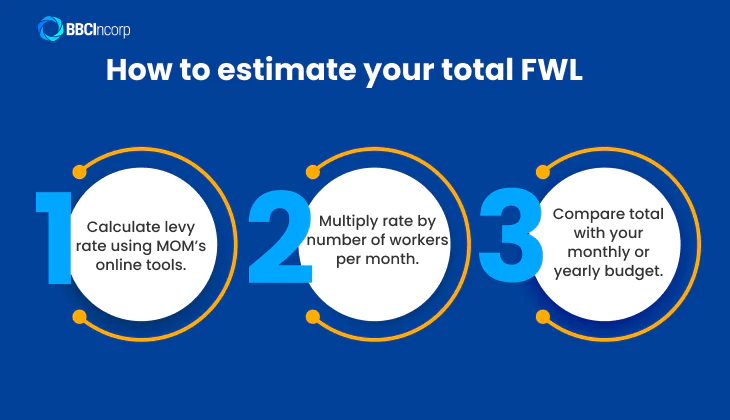
How to check, pay, and manage the FWL
Properly managing your foreign worker levy (FWL) payment obligations is crucial for compliance and cost control. This section is a guide on how to check and pay foreign worker levy, and what to do if issues arise.
Where and how to pay the levy
Employers must pay the foreign worker levy by the 17th of each month, or the next working day if the 17th falls on a weekend or public holiday (MOM). The primary payment method is GIRO, which automatically deducts the levy from your company’s designated bank account. Employers are required to set up a GIRO arrangement when applying to hire foreign workers.
You can also pay the worker levy using alternative platforms, such as:
- CPF Board’s website or e-Services portal
- AXS kiosks and AXS e-Station
- Internet banking (if supported by your bank)
Late payment can lead to serious consequences, including financial penalties, revocation of Work Permits and S Passes, and even a ban on hiring foreign workers. It is advisable to keep sufficient funds in the GIRO-linked account and monitor monthly deductions to avoid missed payments.
Checking your levy obligations
It is equally important to regularly check foreign worker levy records. Employers can log in to the CPF Board’s employer portal or MOM’s online services to view:
- Monthly levy bills and statements
- Worker-specific levy rates and adjustments
- Outstanding or overdue payments
Many mistakes stem from changes in worker status not being updated properly, such as workers leaving the company or being on no-pay leave. To avoid overpayment or underpayment, review your statements each month and promptly update MOM of any changes in your workforce. MOM and CPF also send notifications if irregularities or arrears are detected, so monitoring your correspondence is key.
Managing errors, waivers, or appeals
If you discover you have overpaid the FWL or have been wrongly charged, employers can file a request with MOM or CPF to adjust the billing and recover the excess payment. If a worker is hospitalized, on overseas leave, or otherwise eligible for a waiver, you can apply for a levy waiver through MOM’s online system.
In cases where you disagree with a levy charge, you may also lodge an appeal via MOM’s feedback channels, providing supporting documentation.
By actively managing your check and pay foreign worker levy processes, keeping records up-to-date, and responding quickly to discrepancies, employers can avoid unnecessary costs and plan manpower budgets effectively.
Monthly checklist for managing your FWL
Before the 17th of each month
- Ensure sufficient funds are available in your GIRO-linked account.
- Log in to the CPF Board or MOM employer portal to review your monthly levy statement.
- Confirm that the number of Work Permit and S Pass holders on your payroll matches the statement.
Check for changes in workforce status
- Update MOM immediately if any foreign worker has left employment, been hospitalized, taken overseas leave, or gone on no-pay leave.
- Verify that all workers’ skill classifications (basic-skilled or higher-skilled) are correct to avoid overpayment.
Monitor notifications and correspondence
- Watch for any CPF or MOM notices about irregularities, arrears, or changes in rates.
- Respond promptly to any queries or required actions.
Manage errors or disputes
- If you spot a discrepancy or overcharge, contact MOM/CPF and submit supporting documents to request an adjustment.
- If eligible, apply for a waiver for workers on hospitalization, overseas leave, or similar grounds.
Plan ahead
- Factor FWL payments into your monthly budget.
- Use MOM’s levy calculator to estimate costs if planning to hire more foreign workers.
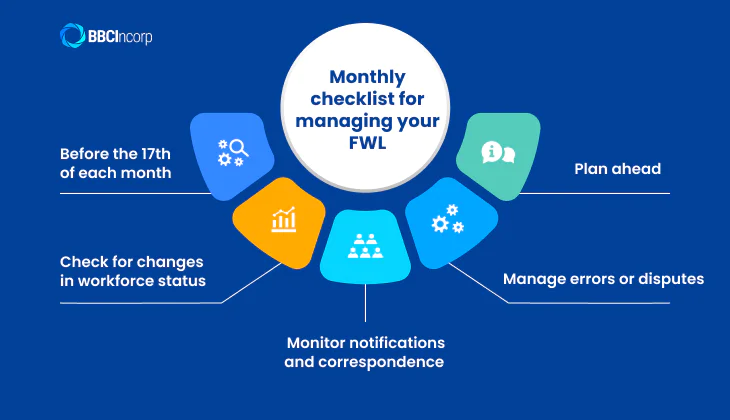
Common challenges and best practices for employers
Effectively managing the worker levy in Singapore can be complex, especially for businesses with larger or diverse workforces. Employers often encounter avoidable mistakes that lead to unnecessary costs or compliance risks. At the same time, adopting the right practices can help you stay ahead of your worker levy payment obligations while optimizing manpower strategy.
Common mistakes employers make
One frequent mistake is misunderstanding the tiered rate system. Many companies assume the FWL Singapore rate is fixed, when in fact it varies significantly depending on your Dependency Ratio Ceiling (DRC) band, sector, and workers’ skill level. Employers operating close to maximum quota limits often pay higher levies without realizing they could restructure to lower bands and save costs.
Another issue is over-reliance on foreign workers, which not only drives up levy payments but also leaves companies exposed to quota restrictions and future policy tightening. Excessive dependence can also limit opportunities to invest in training and retaining local talent.
Failing to monitor quota limits is another risk. Exceeding the allowable DRC for your sector can lead to suspension of Work Permits or S Pass approvals and even revocation of existing passes. This disrupts operations and increases manpower costs through penalties and reapplication fees.
Finally, some employers overlook administrative details such as timely GIRO submission. Missing the setup window or maintaining insufficient funds in the GIRO-linked account can result in late payments, fines, and restricted hiring.
Best practices for managing FWL efficiently
To avoid these pitfalls, employers can adopt several proven practices.
- Start by conducting regular audits of your worker profile. Verify that every foreign worker’s status, skill level, and source country are correctly recorded and aligned with your quota strategy. This helps identify unnecessary costs or misclassified employees.
- Make use of the official foreign worker levy calculator available on MOM’s website. This tool allows you to simulate different hiring scenarios and plan your manpower strategy in advance, keeping the levy Singapore rates manageable.
- Stay informed about sector-specific policy changes and periodic updates from MOM. Regulations and quota ceilings can change over time, and keeping abreast of new rules helps you adapt before higher costs take effect.
- Finally, maintain a buffer in your payroll budget to accommodate monthly levy charges and unexpected adjustments. This ensures your worker levy payment obligations are met on time, safeguarding your company’s ability to hire and retain foreign talent.
Government support and FWL relief schemes
The Singapore government continues to implement targeted measures to help employers manage FWL levy obligations while supporting workforce policies. Below are the key relief schemes and incentives currently available:
Foreign Domestic Worker Levy Concession (FDWL)
Households employing migrant domestic workers can enjoy a reduced foreign levy of SG$60/month (instead of SG$300–450) if they meet the following criteria:
- At least one Singaporean child below 16 in the same household
- Or at least one elderly family member (≥67 years) or person with disabilities living at home
- Or if the employer is a woman returning to work after a career break
The FDWL concession applies for up to two domestic workers and is administered automatically through CPF.
Levy waiver for hospitalisation or overseas leave
If a Work Permit or S Pass holder is hospitalised or on overseas leave for at least 7 consecutive days, employers can apply for a levy waiver for that period. The waiver is capped at 60 days per calendar year per worker and must be applied for via MOM’s online portal within 1 month of the worker’s return.
Levy waiver for workers on maternity or childcare leave
For Work Permit holders eligible for maternity or childcare leave, employers can apply for a levy waiver covering the approved leave days. This supports compliance with employment laws while reducing manpower costs during leave periods.
Levy waiver during suspension of Work Permit or S Pass
If a worker’s pass is suspended by MOM for investigation or other administrative reasons, the employer is not required to pay the worker levy during the suspension period. Employers should confirm the suspension status with MOM and ensure records are updated.
Sector-specific temporary support (when applicable)
During COVID-19, MOM and MOF introduced temporary FWL relief measures for sectors like construction, marine, and process, including rebates and full waivers. While these have ended, MOM occasionally announces Budget 2024–2025 incentives to help specific industries adapt to workforce restructuring. Employers should monitor MOM and Budget updates for new programmes.
By leveraging these relief schemes and staying informed on policy updates, employers can optimise their manpower costs while staying fully compliant with the levy requirements.
How BBCIncorp can support your business in Singapore
Managing a business in Singapore comes with many opportunities and responsibilities. BBCIncorp helps foreign entrepreneurs and established companies confidently expand into Singapore by providing comprehensive corporate services. Our team understands the complexities of employment regulations, including foreign worker levy Singapore requirements, and guides clients every step of the way.
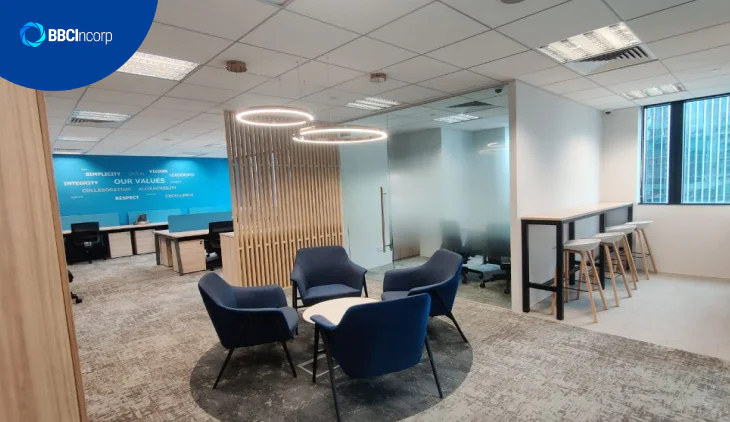
Since 2019, BBCIncorp Singapore has supported both SMEs and multinational companies with Singapore incorporation, Work Permit applications, as well as ongoing payroll and compliance services. Additionally, we advise our clients on managing quotas and cost-effective hiring strategies. Our expertise includes assisting with ongoing compliance for Singapore businesses, including the worker levy framework.
Our Singapore team offers tailored solutions for businesses in construction, services, and other sectors where FWL management is critical. By partnering with us, clients can focus on growth while staying fully compliant with MOM’s labour laws.
We also collaborate with Aspire, a professional global banking service provider, on seamless Singapore company incorporation packages integrated with business banking, providing even greater value for entrepreneurs setting up in Singapore.
Feel free to get in touch with our team or visit our service site for more information on how we can help leverage your business today.
Conclusion
The foreign worker levy in Singapore is a key responsibility for any employer hiring foreign workers. It influences both compliance and manpower costs, making it essential to handle FWL Singapore obligations correctly. Timely FWL payment and adherence to MOM rules help businesses avoid penalties and maintain a sustainable workforce.
If you need guidance on how to pay worker levy efficiently, navigate quotas, and keep up with regulatory changes, professional support makes all the difference. BBCIncorp has the experience and expertise to help your business stay compliant with FWL Singapore rules and focus on growth. Contact us at service@bbcincorp.com to get started.
Disclaimer: While BBCIncorp strives to make the information on this website as timely and accurate as possible, the information itself is for reference purposes only. You should not substitute the information provided in this article for competent legal advice. Feel free to contact BBCIncorp’s customer services for advice on your specific cases.
Industry News & Insights
Get helpful tips and info from our newsletter!
Stay in the know and be empowered with our strategic how-tos, resources, and guidelines.


